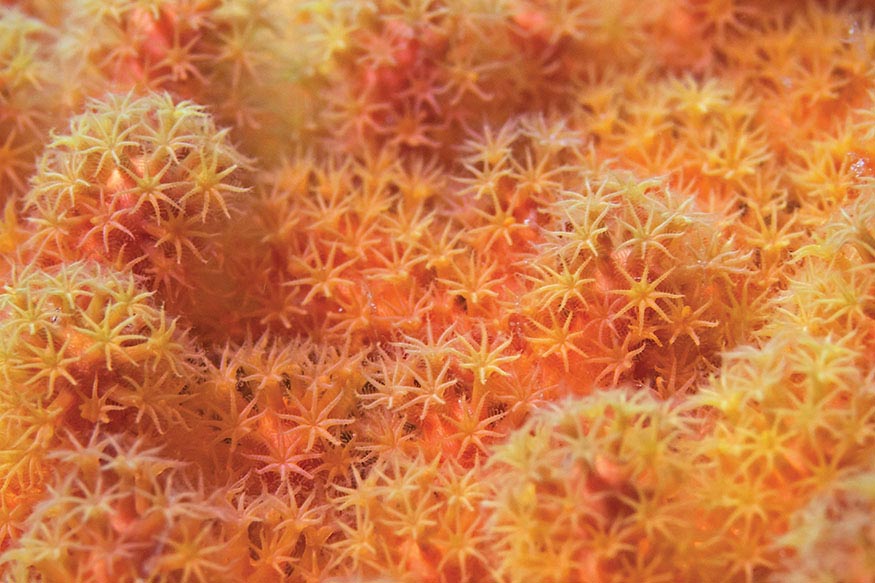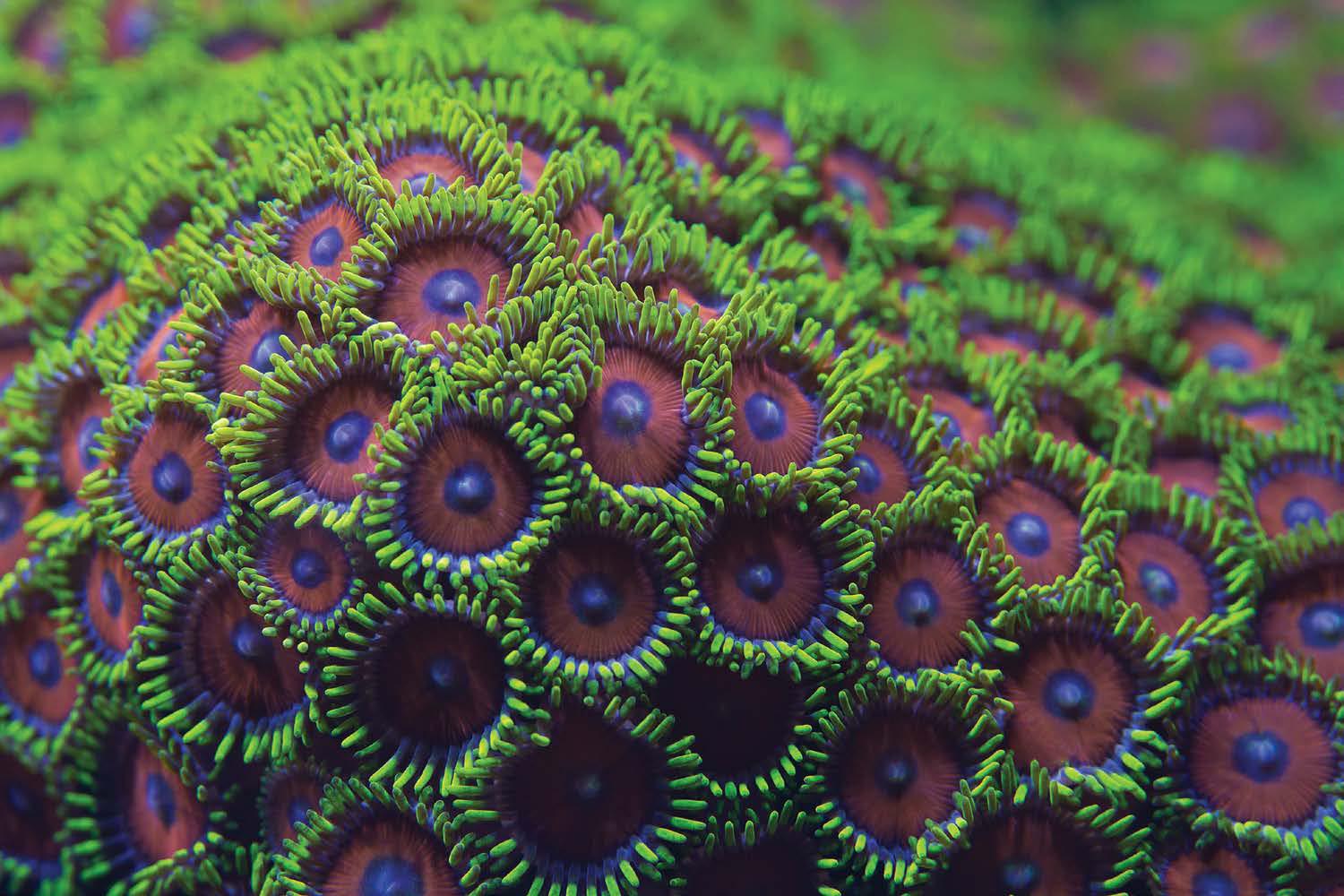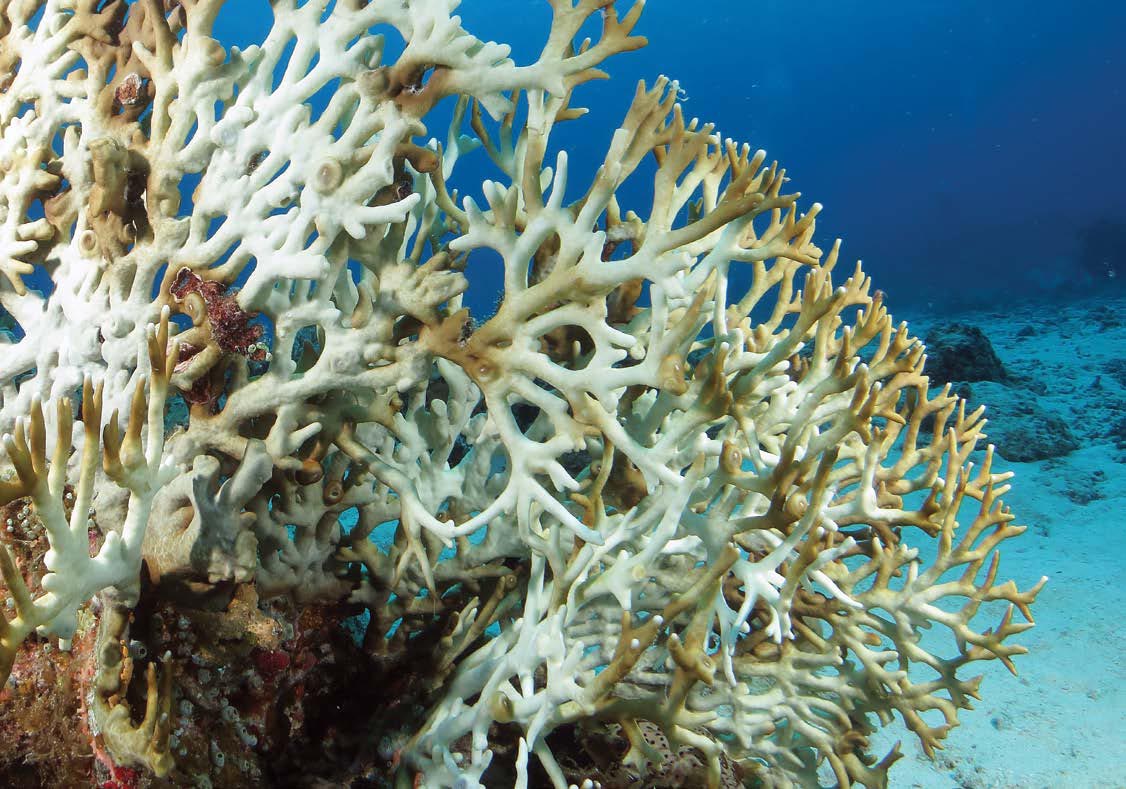
Coral polyps aren’t the only organisms living within a coral skeleton. Like many other ocean species, coral polyps have evolved a special relationship with tiny single-celled organisms called zooxanthellae. Zooxanthellae (pronounced zo-ah-zan-thel-ay) live within the polyps themselves, something like an infection, but they do not harm the polyps. Instead, both organisms help each other thrive; in biology, this is known as symbiosis.
Zooxanthellae primarily produce energy via photosynthesis, and they obtain nutrients from the waste products that coral polyps produce. Similarly, the zooxanthellae produce oxygen and glucose as waste, and the coral polyps use these nutrients for energy. This unique relationship keeps both organisms healthy, and in fact even gives corals their bright colors—corals are naturally white, and those with healthy zooxanthellae populations have more vibrant colors. Conversely, corals in polluted or overly nutrient-rich (eutrophic) water eject the zooxanthellae as an emergency measure in order to conserve their own energy. This results in coral bleaching because the coral loses its color in the process. If the water quality returns to an ideal state, they can reacquire zooxanthellae, but in many cases, the bleached coral starves and dies.

Corals get their coloration from the zooxanthellae living within them, as vividly illustrated by this modern Dragon Eye Coral.

Tightly packed living corallites like these are a good example of how the Petoskey stone’s patterns came to be.
Healthy coral with vibrantly colored zooxanthellae and lively polyps

Coral that has lost its zooxanthellae “bleaches” to a sickly white coloration. This coral will soon starve and die as a result of its water becoming polluted and too warm.
Zooxanthellae did not yet exist in the Devonian Period, when Hexagonaria lived, but it is thought that most corals throughout history have shared a similar symbiotic relationship with other single-celled organisms and algae. As a result, Hexagonaria corals may have been vibrantly colored as well.